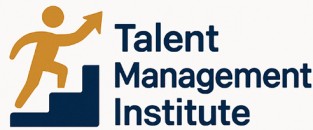
Understanding Workforce Intelligence
Decoding Workforce Intelligence: A Key to Success
Understanding workforce intelligence is critical for organizations aiming to boost productivity and optimize management processes. By leveraging a blend of data and analytics, organizations can gain valuable insights into employee performance, talent capabilities, and workforce dynamics. This approach allows companies to make informed decisions, thereby enhancing overall talent management. Workforce intelligence helps organizations to:- Identify key skills and competencies essential for growth, ensuring that time and resources are allocated effectively.
- Improve talent acquisition strategies by analyzing data-driven insights that reveal trends and patterns in workforce needs.
- Optimize employee engagement, which positively impacts productivity and reduces turnover rates.
The Role of Data in Talent Acquisition
The Power of Data in Shaping Talent Acquisition Strategies
Incorporating data into talent acquisition processes is increasingly becoming a cornerstone for effective workforce management. By leveraging workforce intelligence, organizations can make more informed decisions, significantly impacting workforce planning and productivity. Data-driven approaches allow companies to not only evaluate potential candidates more effectively but also ensure that their recruitment strategies are optimized for long-term employee performance. This is particularly vital in regions like southeast Michigan where diversified industrial growth demands a highly skilled workforce.- Intelligent Insights: Utilizing workforce analytics offers insights that help identify key skills needed across different sectors, ensuring recruitment efforts align with organizational goals.
- Time and Cost Efficiency: Implementing analytics and management software reduces recruitment time and costs, giving companies a competitive edge in attracting top talent.
- Enhanced Decision-Making: With data-driven decision-making, organizations can predict workforce needs, streamline talent acquisition, and ultimately improve employee engagement and performance.
Enhancing Employee Engagement Through Insights
Utilizing Insights to Foster Employee Engagement
In today's dynamic work environment, maintaining high levels of employee engagement is essential for improving productivity and retention. Workforce intelligence plays a pivotal role by providing organizations with valuable insights that enhance employee engagement strategies. This data-driven approach helps organizations in making informed decisions that align with employee needs, ultimately fostering a more motivated workforce. Michigan Works and community colleges in southeast Michigan have shown how integrating workforce intelligence into their talent management practices can lead to positive outcomes. By analyzing workforce analytics, these institutions have been able to tailor their engagement programs specifically to the needs and skills of their employees or students. Organizations can leverage data to create a personalized employee experience. Real-time insights into employee performance and engagement patterns allow for a more responsive management style. For instance, by using management software that consolidates various data employee points, companies can identify the factors that contribute to employee satisfaction and address any areas requiring improvement swiftly. Workforce planning tools that incorporate predictive analytics also offer a significant advantage. They not only enhance engagement by foreseeing potential disengagement but also help in planning future talent acquisition efforts. For example, recognizing which departments might face increased workload can prepare management to make proactive decisions, avoiding potential burnout among their teams. Overall, embracing workforce intelligence is instrumental in understanding and improving the employee experience. By continuously refining engagement strategies through a data-driven approach, organizations can sustain a healthy work environment that motivates and retains talented individuals. This is a clear win for businesses focused on maximizing their workforce's performance and satisfaction.Predictive Analytics in Workforce Planning
Predictive Workforce Planning Using Data-Driven Insights
In the realm of effective talent management, predictive analytics stands as a transformative force that helps organizations anticipate future workforce needs. By leveraging workforce intelligence, businesses in regions like southeast Michigan can make informed decisions, optimizing both employee performance and overall productivity.
Employing workforce analytics enables companies to utilize real-time data to predict trends and prepare for future challenges. This kind of intelligence helps in the development of strategic plans that align with the evolving demands of the workforce. Community colleges and workforce development entities like Michigan Works play a critical role in equipping individuals with the necessary skills, making them more adaptable to anticipated changes in the job market.
With the aid of management software, organizations can streamline the collection and analysis of workforce data. This, in turn, allows for a more seamless integration of insights into workplace strategies. Utilizing these analytics tools aids in tracking employee engagement and performance over time, allowing for timely interventions and the enhancement of employee productivity. Workforce management informed by such precision not only fosters a proactive stance but also signifies a commitment to continuous improvement.
Talent management is taking a leap with predictive capabilities. As organizations harness the power of workforce intelligence, the ability to foresee potential gaps and plan for them becomes a significant competitive advantage. Embedding these insights into decision making results in a more agile and responsive workforce strategy, setting organizations on the path to long-term success.
Overcoming Challenges in Implementing Workforce Intelligence
Addressing Implementation Hurdles
Implementing workforce intelligence in talent management is not without its challenges. Organizations often encounter several obstacles that can impede the effective use of data-driven insights. Understanding these challenges is crucial for overcoming them and leveraging workforce intelligence to its full potential.
Data Integration and Quality
One of the primary challenges is integrating data from various sources. Organizations often have data scattered across different systems, such as management software, employee performance records, and workforce analytics tools. Ensuring data quality and consistency is essential for making informed decisions. This requires a robust data management strategy that can handle real-time data and maintain its integrity.
Privacy and Security Concerns
With the increasing reliance on data, privacy and security concerns are paramount. Organizations must ensure that employee data is protected and used ethically. This involves implementing stringent data protection measures and complying with relevant regulations. Balancing data utilization with privacy is a delicate task that requires careful planning and execution.
Change Management and Adoption
Another significant hurdle is the resistance to change within organizations. Employees and management may be hesitant to adopt new technologies and processes. Effective change management strategies are essential to facilitate the transition. This includes training employees, demonstrating the benefits of workforce intelligence, and fostering a culture of continuous improvement.
Technical and Resource Limitations
Technical limitations and resource constraints can also pose challenges. Implementing advanced analytics and intelligence software may require significant investment in technology and skills development. Organizations need to assess their current capabilities and identify areas for improvement to ensure successful implementation.
Building a Skilled Workforce
Finally, developing a skilled workforce capable of leveraging workforce intelligence is crucial. This involves investing in training and development programs to enhance employee skills and improve productivity. Collaborations with community colleges and initiatives like Michigan Works can help organizations build a talent pool equipped to handle the demands of modern workforce management.
By addressing these challenges, organizations can harness the power of workforce intelligence to enhance employee engagement, improve performance, and drive productivity. Overcoming these hurdles is a win for both the organization and its employees, paving the way for a more informed and effective talent management strategy.













